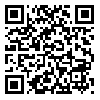Volume 27, Issue 11 (2-2020)
JSSU 2020, 27(11): 2052-2062 |
Back to browse issues page
Abstract: (2638 Views)
Introduction: Adhesion molecules play an important role in the pathogenesis of atherosclerosis and the type of training may affect the response to these indicators. Therefore, the purpose of the present study was to investigate the effect of a continuous versus interval aerobic training session on plasma levels of intercellular adhesion molecules 1 (ICAM-1) and vascular cell adhesion molecules 1 (VCAM-1) in patients with coronary artery disease.
Methods: In this quasi-experimental study, 9 women with coronary artery disease participated in pre-test and two stages of post-test design (interval and continuous). Continuing training program included running or walking for 30 minutes with an intensity of 60% of maximum heart rate. Therefore, interval training included 30 minutes of walking or running with variable intensity between 50% and 80% peak heart rate. ICAM-1 and VCAM-1 serum levels were measured in scale of ng/ml by ELISA. Results were analyzed by SPSS Inc., Chicago, IL; version 24 and repeated measures test were used at a significant level of P≤0.05.
Results: One session of continuous and interval training didn’t show significant differences in ICAM-1 and VCAM-1 serum levels. So that the ICAM-1 levels were obtained (233.6 ± 0.1) after continuous training and (230.4 ± 1) after interval training (P= 0.186). In addition, VCAM-1 levels were observed (163.3 ± 7.0) after continuous training and (194.8 ± 6.9) after interval training (P= 0.121).
Conclusion: One session of training stimulates inflammatory pathways in coronary artery disease patients. Based on the results of this study, the effect of continuous aerobic training on the levels of adherent molecules cannot be determined certainty and more research is needed.
Methods: In this quasi-experimental study, 9 women with coronary artery disease participated in pre-test and two stages of post-test design (interval and continuous). Continuing training program included running or walking for 30 minutes with an intensity of 60% of maximum heart rate. Therefore, interval training included 30 minutes of walking or running with variable intensity between 50% and 80% peak heart rate. ICAM-1 and VCAM-1 serum levels were measured in scale of ng/ml by ELISA. Results were analyzed by SPSS Inc., Chicago, IL; version 24 and repeated measures test were used at a significant level of P≤0.05.
Results: One session of continuous and interval training didn’t show significant differences in ICAM-1 and VCAM-1 serum levels. So that the ICAM-1 levels were obtained (233.6 ± 0.1) after continuous training and (230.4 ± 1) after interval training (P= 0.186). In addition, VCAM-1 levels were observed (163.3 ± 7.0) after continuous training and (194.8 ± 6.9) after interval training (P= 0.121).
Conclusion: One session of training stimulates inflammatory pathways in coronary artery disease patients. Based on the results of this study, the effect of continuous aerobic training on the levels of adherent molecules cannot be determined certainty and more research is needed.
Keywords: Endurance Training, Interval Training, Intercellular Adhesion Molecule-1, Vascular Cell Adhesion Molecule-1, Coronary Vessels
Type of Study: Original article |
Subject:
Exercise Physiology
Received: 2019/09/28 | Accepted: 2020/03/10 | Published: 2020/03/10
Received: 2019/09/28 | Accepted: 2020/03/10 | Published: 2020/03/10
| Rights and permissions | |
 |
This work is licensed under a Creative Commons Attribution-NonCommercial 4.0 International License. |




